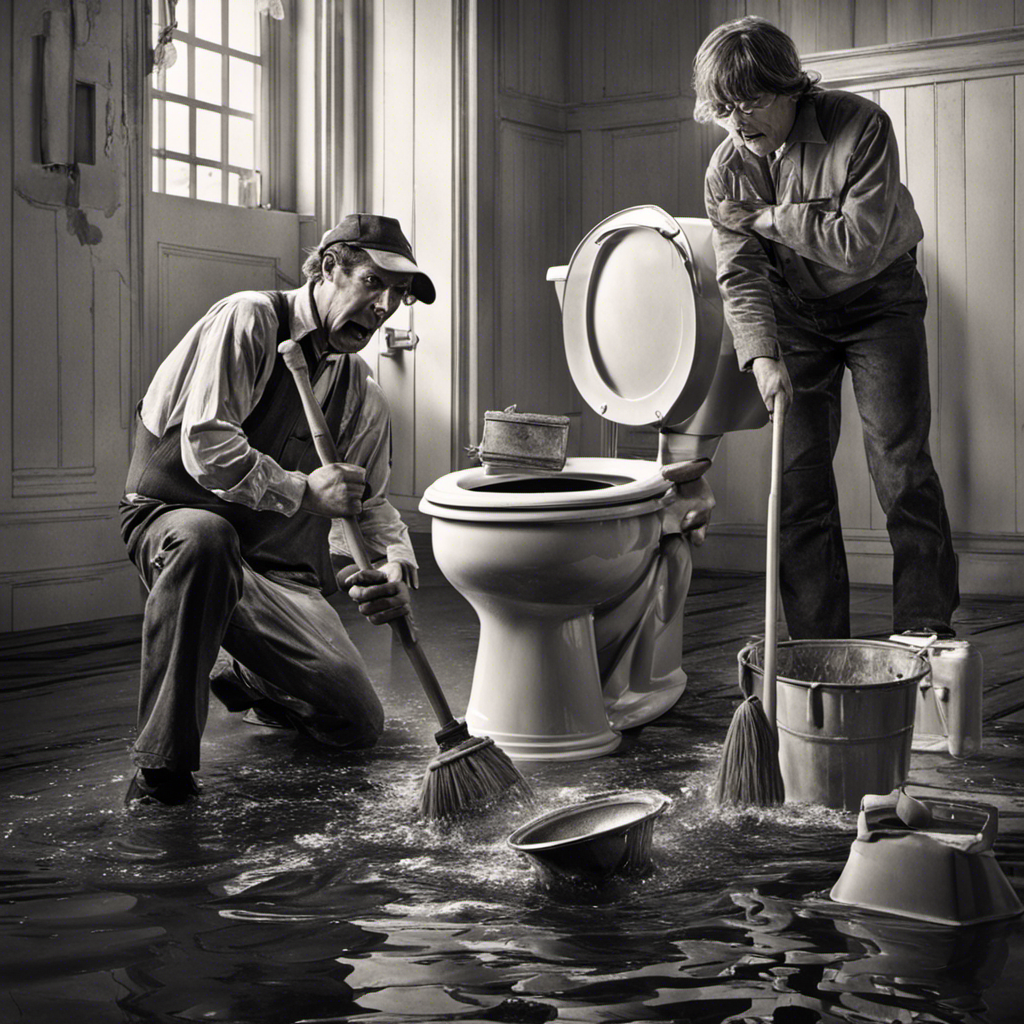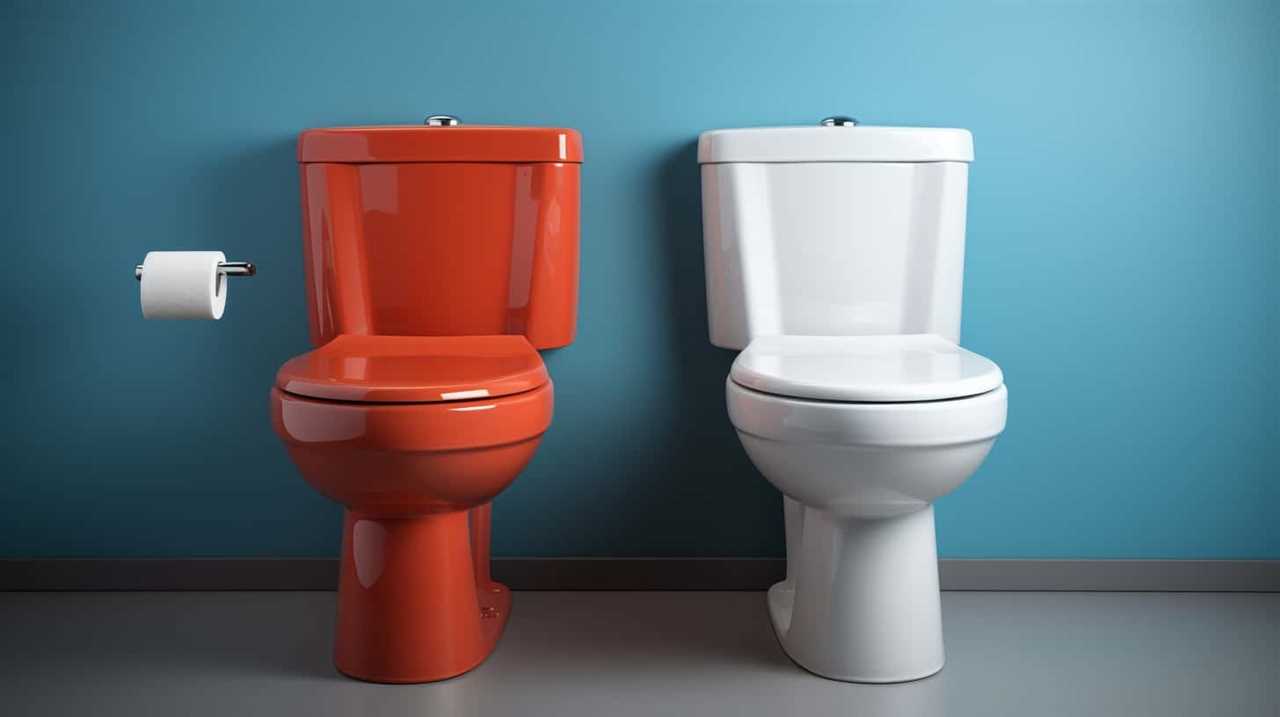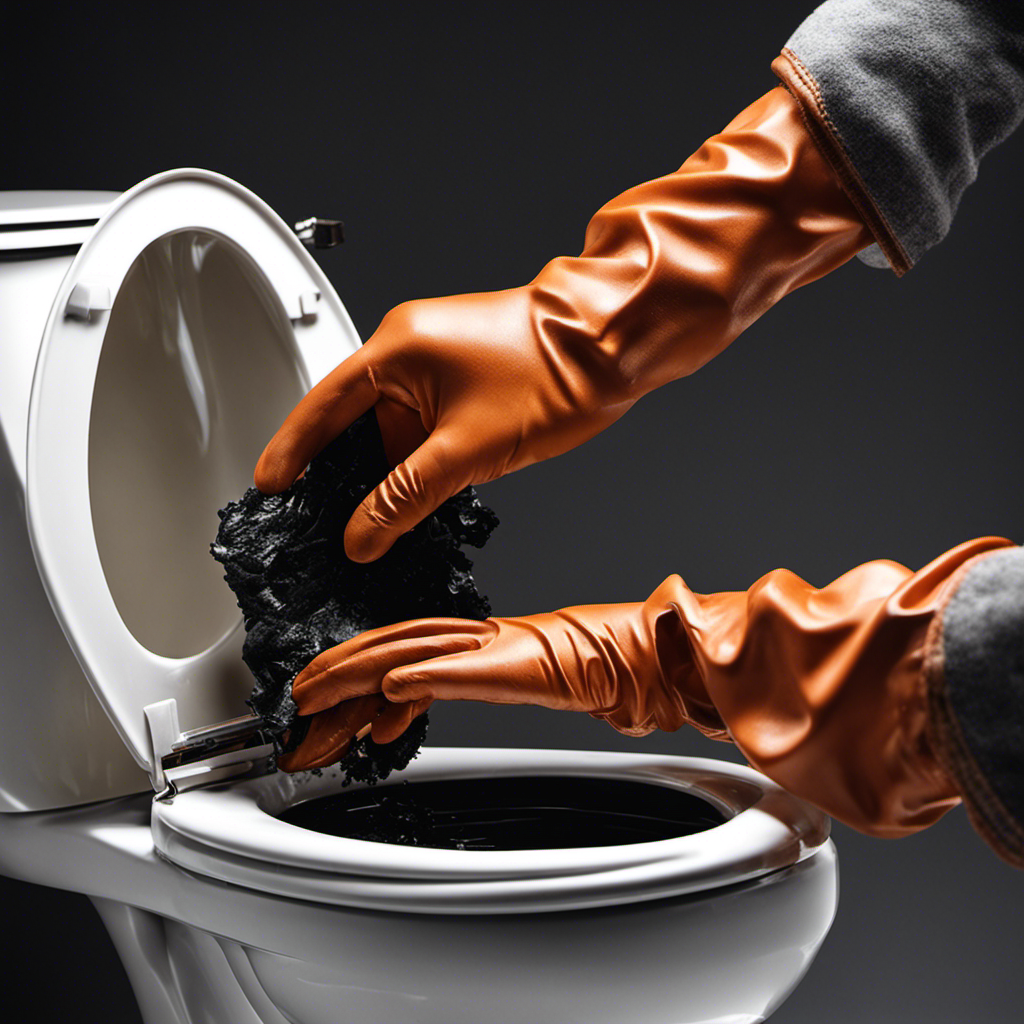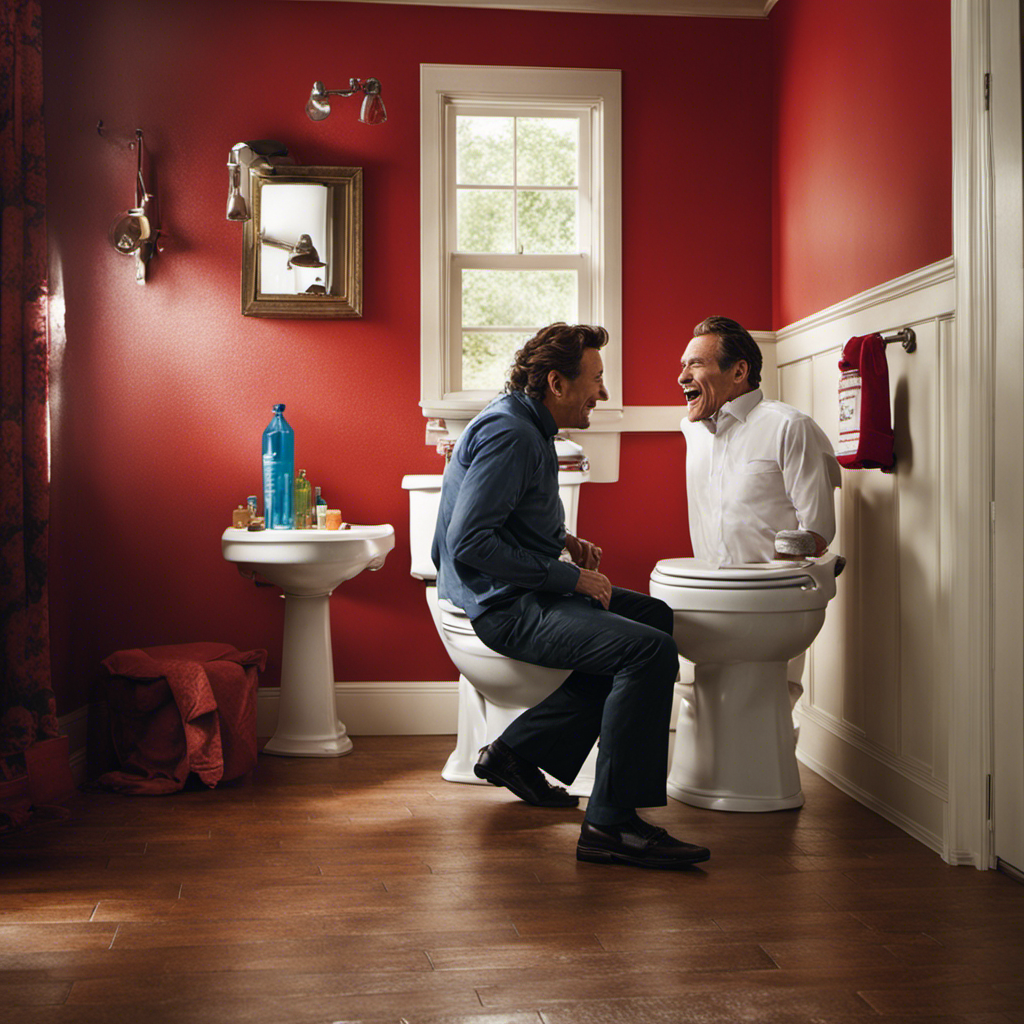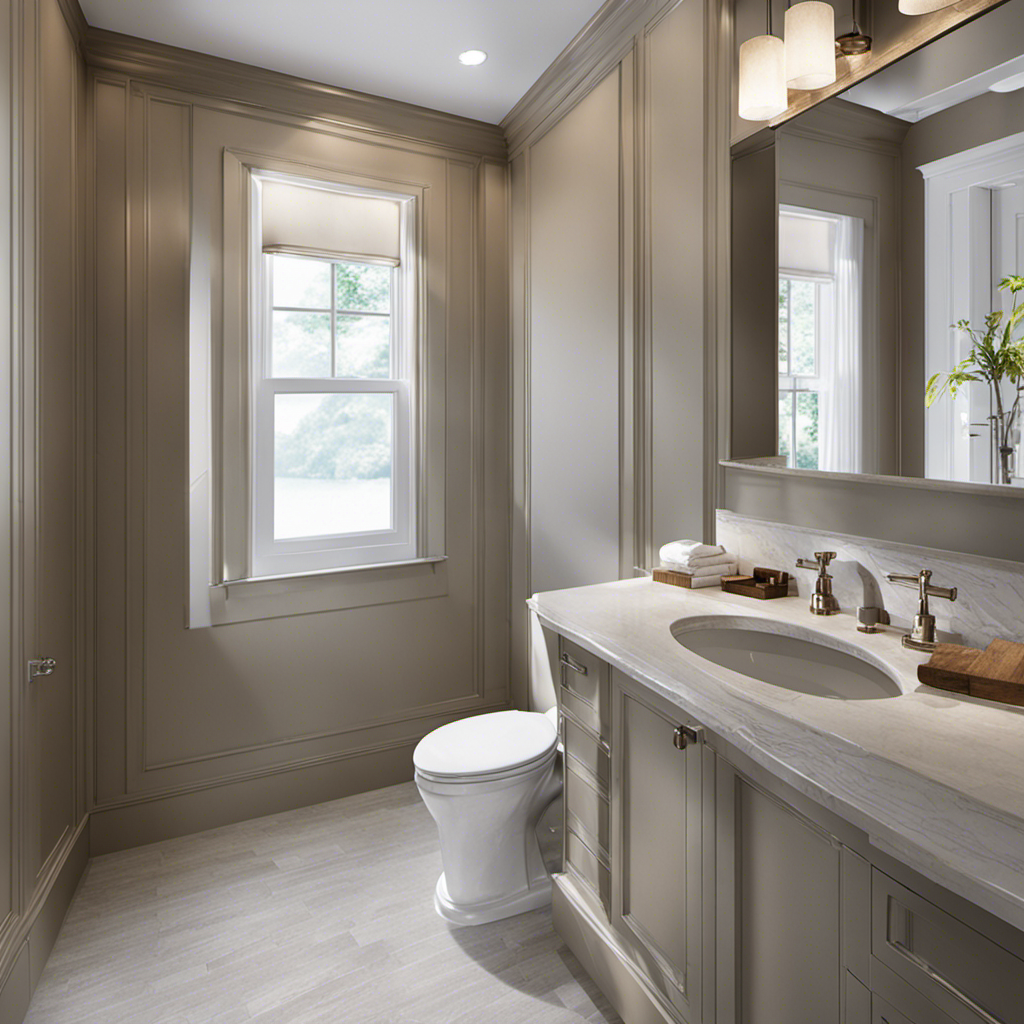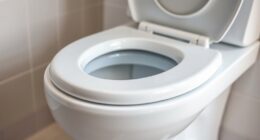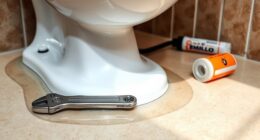I’ve been there before – standing in front of a clogged toilet, feeling a mix of frustration and panic. But fear not, because I’m here to guide you through the process of unclogging your toilet with ease.
In this article, we’ll explore the causes of a clogged toilet, the tools and supplies you’ll need, and a step-by-step guide to get your toilet flowing again. We’ll even dive into alternative methods and offer advice on preventing future clogs.
So let’s roll up our sleeves and tackle this problem head-on.
Key Takeaways
- Flushing excessive amounts of toilet paper or non-flushable items can cause toilet clogs.
- Using a plunger and a bucket is the first step in unclogging a toilet.
- If plunging doesn’t work, a toilet auger can be used to break up stubborn clogs.
- If all else fails, it’s best to call a professional plumber to avoid further damage.
Causes of a Clogged Toilet
One of the most common causes of a clogged toilet is flushing excessive amounts of toilet paper. Toilet paper is designed to dissolve in water, but flushing large quantities can overwhelm the system and lead to blockages.
Another common clogging issue is flushing items that are not meant to be disposed of in the toilet. This includes sanitary products, baby wipes, or paper towels. These items do not break down easily and can cause blockages in the pipes.
Signs of a clogged toilet may include slow drainage, water rising to the rim, or a complete blockage. If you notice any of these signs, it’s important to address the issue promptly to prevent further damage.
To address a clogged toilet, start by using a plunger to create pressure and dislodge the blockage. Place the plunger over the drain hole and push down firmly, then pull up quickly. Repeat this motion several times until the water starts to drain.
If using a plunger doesn’t work, you can try using a toilet auger. This tool is designed to break up clogs that are deeper in the pipes. Insert the auger into the toilet bowl and crank the handle clockwise to break up the blockage. Be sure to follow the manufacturer’s instructions and take safety precautions when using a toilet auger.
Tools and Supplies Needed for Unclogging
To unclog a toilet, you’ll need a plunger and a bucket. Plunging techniques are the first line of defense when it comes to dealing with a clogged toilet. A plunger creates pressure and suction to dislodge the blockage. Make sure the plunger has a good seal against the drain opening and push down firmly, then pull up quickly to create the suction. Repeat this motion several times until the water starts to drain. If plunging doesn’t work, you may need to try using a drain snake. There are different types of drain snakes available, including hand-powered and electric ones. These tools allow you to reach deeper into the pipes and break up stubborn clogs.
Now that you have the necessary tools and supplies, let’s move on to the step-by-step guide to unclog a toilet.
Transition: Now that we have the tools and supplies ready, let’s learn how to unclog a toilet step by step.
Step-by-Step Guide to Unclog a Toilet
Start by checking the water level in the toilet bowl. If it’s too high, you may need to turn off the water supply valve located behind the toilet.
Now, let’s get into the step-by-step guide to unclog a toilet:
-
Use a plunger: Place the plunger over the drain hole and start plunging vigorously. The suction created will help dislodge the clog.
-
Try a toilet auger: Insert the auger into the drain hole and crank the handle. This will allow the auger to break up the clog and clear the way.
-
Use a homemade solution: If the plunger and auger didn’t work, try pouring a mixture of hot water and dish soap into the toilet bowl. Let it sit for a few minutes, then flush.
Alternative Methods for Unclogging
If the plunger and auger didn’t work, you can try using a mixture of baking soda and vinegar to unclog your toilet. This natural remedy is one of the most effective toilet unclogging hacks.
Here’s how to do it:
- Start by pouring one cup of baking soda into the toilet bowl.
- Follow it up with two cups of vinegar.
- Allow the mixture to sit in the bowl for about 30 minutes.
- After the time has elapsed, flush the toilet to see if the clog has cleared.
The combination of baking soda and vinegar creates a chemical reaction that helps break down the clog and clears the drain. This method is safe for your plumbing system and the environment. However, it may not work for severe clogs or blockages caused by non-flushable items.
If the problem persists, it’s best to call a professional plumber to avoid further damage. Remember, regular maintenance and proper usage of your toilet can prevent future clogs.
Preventing Future Toilet Clogs
Regular maintenance and proper usage of your toilet can help prevent future clogs. Here are three essential steps you can take to ensure your toilet stays in good working condition:
-
Regular Cleaning: Keeping your toilet clean is crucial for preventing clogs. Use a toilet brush and cleaner to remove any buildup of dirt, grime, or mineral deposits. Pay attention to the rim, siphon jets, and trapway, as these areas are prone to clogging.
-
Proper Flushing: Teach everyone in your household to use the toilet correctly. Remind them to only flush toilet paper and human waste, avoiding flushing items like wipes, dental floss, or feminine hygiene products. Flushing these items can lead to blockages and costly plumbing services.
-
Maintenance Checks: Regularly inspect the components of your toilet, such as the flapper, fill valve, and flush handle. Ensure they are functioning properly and replace any worn-out parts promptly to prevent potential clogs.
Conclusion
In conclusion, a clogged toilet can be a frustrating and messy problem to deal with. However, armed with the right knowledge and tools, you can tackle this issue head-on.
Remember, the key is to identify the root cause of the clog and address it using the appropriate techniques and tools.
By following the step-by-step instructions provided, you can effectively unclog your toilet and prevent future clogs.
Just like a skilled plumber, with a problem-solving mindset and a little know-how, you can conquer any toilet clog that comes your way.
